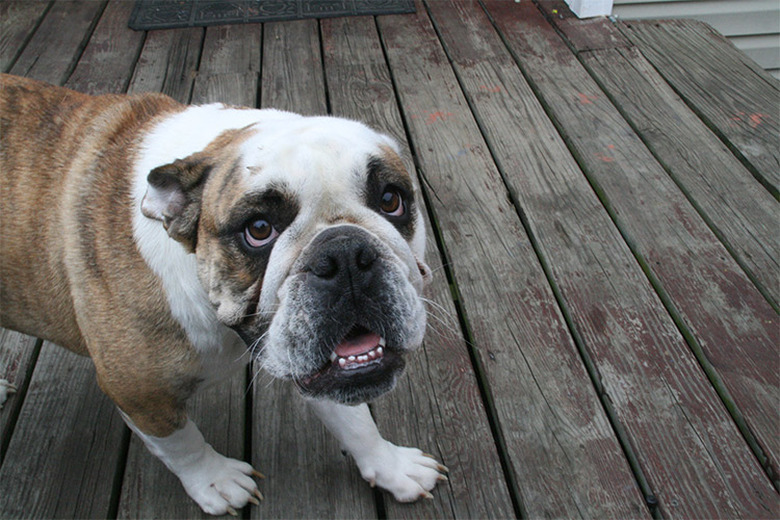Reverse Sneezing Vs. Tracheal Collapse In Dogs
While dogs experiencing reverse sneezing or tracheal collapse might make similar noises, the former is a much less serious condition than the latter. While reverse sneezing — formally known as pharyngeal gag reflex — normally doesn't need veterinary attention, tracheal collapse often requires surgery.
Reverse Sneezing
While your dog might seem as if he's about to croak when reverse sneezing, it's usually not nearly as bad as it sounds. In normal sneezing, he pushes air out of his nose. When reverse sneezing, the air is pulled into his nose, producing a honking or snorting noise. He snorts while extending his neck and head and expanding his chest. The reverse sneeze can last just seconds or go on for a minute or more. Reverse sneezing triggers include allergens, excitement and strong odors. Once the episode is over, your dog acts like nothing happened.
Tracheal Collapse
Signs of tracheal collapse start with that characteristic honking sound. The trachea, or windpipe, is a rigid tube that allows air to enter the lungs via the nose or mouth. It consists of cartilage rings and muscle, and weakening of these rings can cause the windpipe to collapse. A dog might suffer from partial or complete tracheal collapse. Besides the cough, symptoms include difficulty breathing and lethargy. In severely affected dogs, the gums turn blue. Without treatment, symptoms of tracheal collapse become progressively worse. To help prevent tracheal collapse, walk your toy dog with a harness and leash rather than a collar and leash. Keep your pet at a healthy weight. Even if you take precautions, tracheal collapse might occur, as it appears to be hereditary in some breeds.
Affected Breeds
Any dog might exhibit reverse sneezing. It's more common in canines with long nasal passages, but brachycephalic breeds like the pug or bulldog might experience reverse sneezing, because these dogs often have elongated soft palates. They might inhale the palate into their throats, setting off reverse sneezing. Tracheal collapse occurs primarily in toy breeds — but their small throats also make them more likely to reverse sneeze. Tracheal collapse is most common in middle-age Yorkshire terriers, Pomeranians, toy poodles and Chihuahuas.
Treatment
Unless reverse sneezing becomes chronic, a dog usually doesn't require treatment. If he's constantly reverse-sneezing, your vet might conduct allergy tests to determine if that's the cause. If an elongated soft palate is the culprit, your vet can repair it with surgery. In dogs with tracheal collapse, medical management with steroids and cough suppressants can treat but not cure the condition. If a dog doesn't respond to medication either initially or over time, surgical replacement of the collapsed cartilage rings with prosthetics might be necessary.
By Jane Meggitt
References
Veterinary Partner: Reverse Sneezing (Pharyngeal Gag Reflex)
VCA Animal Hospitals: Reverse Sneeze in Dogs
Veterinary Partner: Tracheal Collapse
ASPCA: Tracheal Collapse
WebMD: Tracheal Collapse in Dogs
About the Author
Jane Meggitt has been a writer for more than 20 years. In addition to reporting for a major newspaper chain, she has been published in "Horse News," "Suburban Classic," "Hoof Beats," "Equine Journal" and other publications. She has a Bachelor of Arts in English from New York University and an Associate of Arts from the American Academy of Dramatics Arts, New York City.
